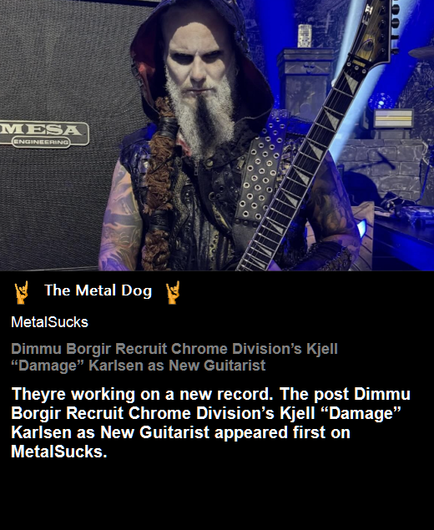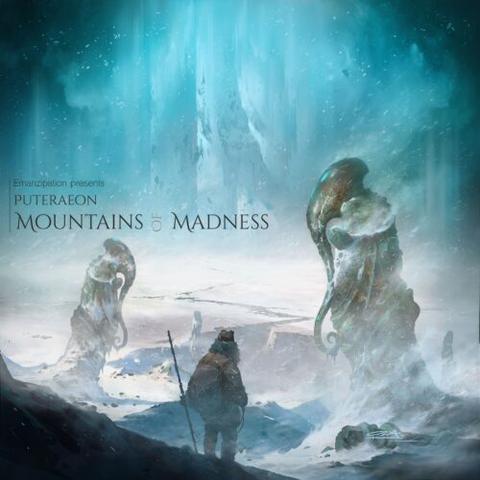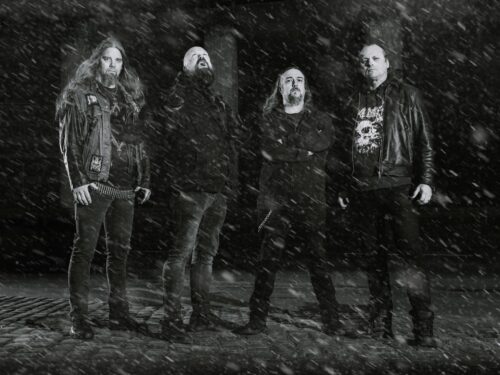Lamp of Murmuur – The Dreaming Prince in Ecstasy Review
By Tyme
L.A.-based M., the mastermind behind Lamp of Murmuur, has been busy this year. In addition to releasing two other solo projects—Silent Thunder’s EP, Soulspear, and Magus Lord’s full-length, In the Company of Champions—he’s readying to unleash his fourth Lamp of Murmuur long player, The Dreaming Prince in Ecstasy, this November. Far removed from the very lo-fi, kvltish cassette-only demos of 2019, Lamp of Murmuur has steadily matured over the years. Our resident shark, Carcharodon, had ‘tons of fucking fun’ with 2023’s Saturnian Bloodstorm, highlighting its heavy Immortal influence. When I spied The Dreaming Prince in Ecstasy sitting unclaimed in the sump, I reached out to our scrivening squalus, who graciously ceded his seniority, hoping I had as much fun with LoM’s newest outing as he had with its last. Will The Dreaming Prince in Ecstasy build off the excitement of Saturnian Bloodstorm, and further M.’s musical momentum, or will we discover that Lamp of Murmuur’s shine has dimmed a bit?
At first blush, The Dreaming Prince in Ecstasy extends Saturnian Bloodstorm’s thrashing black metal template before wading into waters teeming with new wave and gothic metal elements. Immortal’s influence still lurks amidst M.’s swirling, rapid-fire tremolos and galloping chugs (“Hategate (the Dream-Master’s Realm)”), while twinkling, Këkht Aräkh-like keys lace the guitar-driven melodies on “Forest of Hallucinations,” its intro emitting South of Heaven-era Slayer vibes from the harmonized leads. M.’s vocals, as blackly metallic and viscerally lethal as ever, are dichotomously connected to the music and venture into minimally explored cleaner climes while sharing the spotlight on “A Brute Angel’s Sorrow” with guest vocalist Crying Orc (Këkht Aräkh).1 For beyond the Nightmare on Elm Street meets Black Aria2 vibes of instrumental opener “The Fires of Seduction,” lie the equally moody atmospheres of mid-album interlude “Angelic Vortex,” which serves as a portal, ushering listeners from Lamp of Murmuur’s past into what The Dreaming Prince in Ecstasy represents for the project’s future.
Three-part title track, “The Dreaming Prince in Ecstasy,” is the album highlight. Without jettisoning its black metal roots, Lamp of Murmuur shrouds this triptych in a Sólstafiric, proggy haze of spacy, 70s-style rock guitar solos and cascading Phantom of the Operatic progressions (“Part I – Moondance”), melodic, soaring leads (“Part II – Twilight Orgasm”) and a romping, symphonic paganism (“Part III – The Fall”) reminiscent of early Old Man’s Child. In addition, M.’s broadening, clean vocals inject new-wave intensity into the non-harsh moments of “Moondance,” a Moroder & Bowie “Cat People (Putting Out the Fire)” feel into the latter croons of “Twilight Orgasm,” and an effective, Cattle Decapitation-esque tonal rasp into “The Fall.” I think I had as much fun diving in and out of the waters of this stretch of TDPiE as our beloved sharkster had ingesting the whole of Saturnian Bloodstorm.
As often as dichotomy spearheads musical diversity, however, it can also foster unintended inconsistency, and in the court of The Dreaming Prince in Ecstasy’s case, the latter unfortunately testifies loudest. As many moments of greatness exist on both halves of TDPiE’s whole, so too do some missteps. M.’s first instance of cleans, for example, at the end of “Hategate (The Dream-Master’s Realm)” sound out of tune and pulled me from an otherwise enjoyable listen during every spin. In addition, “Part I – Moondance” contains some awkwardly off-key musical transitions, and at times, the staccato, machine-gun riffage in “Part III – The Fall” feels out of sync with the drumming. And as much as I enjoyed the acoustically well-executed and clean-sung “A Brute Angel’s Sorrow,” its off-putting, last-batter-in-the-lineup positioning completely saps the majesty from the silence left in the wake of “Part III – The Fall”‘s last powerful chord.
A tenet often adhered to despite its obtusity is that broadened popularity for a band that launched its career from the darkened shadows of the kvlt black metal world usually leads to its death or disownment. In the case of Lamp of Murmuur, a forerunner of the current USBM scene, opinions may vary. As it stands, The Dreaming Prince in Ecstasy is a full-length that, if released as a pair of EPs, might have transcended its holistic inconsistencies. I’ve grown past the distaste I felt on initial listens to appreciate both sides of what Lamp of Murmuur has done here and look forward to M.’s continued growth, as should you.
Rating: 3.0/5.0
DR: 9 | Format Reviewed: 320kbps mp3
Label: Wolves of Hades
Websites: Bandcamp | Facebook
Releases Worldwide: November 14th, 2025
#2025 #30 #blackMetal #gothicMetal #immortal #kekhtArakh #lampOfMurmuur #nov25 #oldMansChild #review #solstafir #theDreamingPrinceInEcstasy #usbm #wolvesOfHadesRecords














